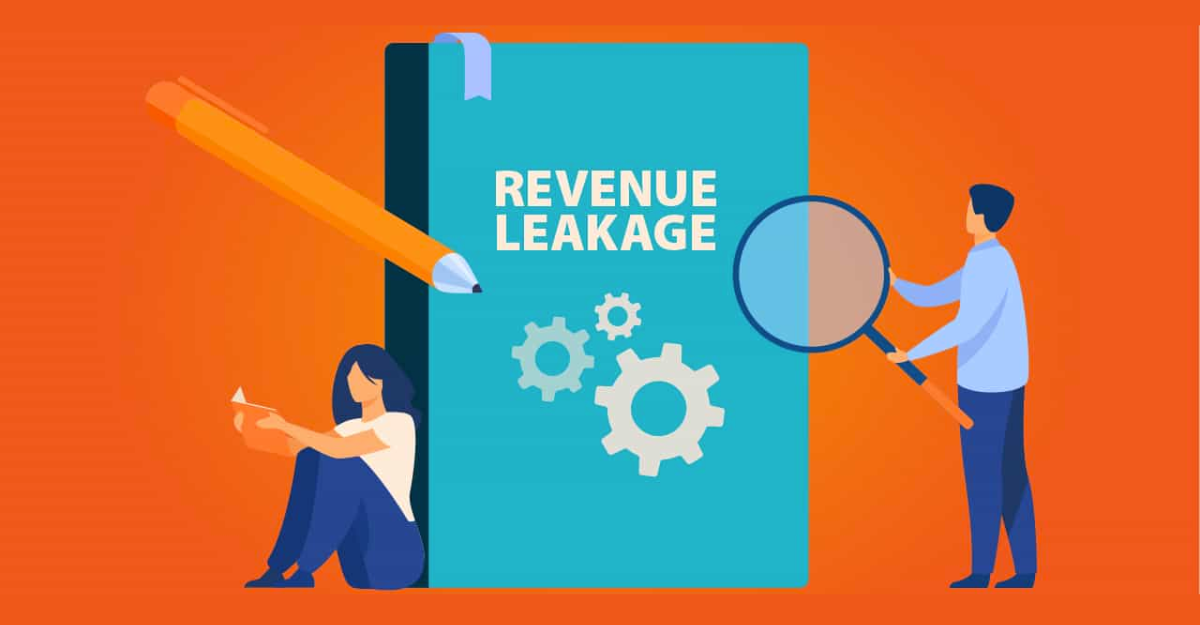Revenue leakage is the unintentional and unnoticed loss of revenue from a company. It typically comes from unbilled or underbilled service hours or products – essentially, you’re doing the work and not getting the right amount of compensation.
Every successful and (unsuccessful) sales deal starts with a quote. These quotes are formal statements that service/solution providers offer in order to help prospects get a ballpark figure to make a purchase.
However, it is often during these quoting processes, prospects don’t come back, leading to missed opportunities or more commonly known as and eventually, revenue leakage.
A 2020 Boston Consulting Group report states that 45% of executives consider revenue leakage a recurring problem for their respective organizations. Moreover, even EY suggests that companies should expect revenue leakage of 1% to 5% annually.
What is revenue leakage, and its impact?
Revenue leakage is the difference between the revenue recognized and the revenue collected.
It is an unaccounted portion of revenue that is often unnoticed or unaccounted for. While these singular revenue differences may seem trivial, when put together, may incur huge losses, sometimes leading up to billions.
Revenue leakage can occur at every stage of the cash process, usually starting from the quoting process. It can also occur mid-way due to unclear communication.
Like fixing a leak in your plumbing system prevents wastage of water or flooding of your property, fixing a revenue leak saves your business from a flood of loss.
Why should you know about revenue leakage?
Most small and medium-sized businesses rely on sufficient cash flow to run their business. When revenue leakage comes into the picture, it gets difficult to supplement the business with intermittent money flow, which directly impacts the company’s operations.
Since even a small revenue tear can avalanche into big losses, it is important to patch up the said leakage.
Read more – How to drive revenue maximization in the sales process with service quoting?
Causes of revenue leakage in professional service organizations
Different companies have different variations of revenue leakage. However, it always helps to understand the source and the cause of the leak.
In addition to resolving existing revenue leakage, knowing the following reasons can also act as preventive measures.
#1. It is difficult to determine what the right rate should be – This is especially the case with Saas services where different clients have varied requirements that call for customized bills.
If not customizable solutions, these clients may have different billing requirements based on their geography. Different factors like conversion rate, labor laws, resource availability and so on may further complicate the billing process.
The confusion can impact the original quotation and the bill might end up being less than what you are actually owed, leading to a huge gap in revenue expected vs revenue received.
#2. Lack of visibility and accuracy in reporting – Large enterprises present across different time zones and logistics companies have tons of data that they do not leverage to upscale their sales.
For instance, a clientele from a certain region may require customized solutions that may cost extra and help expand the revenue growth. But the lack of visibility into data does not let your business optimize that opportunity and you continue with your ‘run-of-the-mill’ process.
This lack of visibility and accuracy leads to a loss in cash flow and as a result, revenue leakage. Having a more holistic view of your clients and your services via data reporting can help plug that hole.
#3. Error-prone and time-consuming rate updates – Money is what companies boil down to. If your rate is not consistent across the service and worse, not visible, it gets very difficult for the client to trust the process.
If the cost is quoted and agreed upon during the discovery call, it is important to show the same number throughout the process. Clients should be able to view and track the costing seamlessly, otherwise, you might lose customers to frustration that can lead to gaps in your bottom line.
Read more – How to drive sales acceleration using services quoting?
#4. Disparate tools and processes – You have your strategy in place, your customer is happy to be onboarded and all you have to do is press ‘go’. But not before going through a multitude of processes, countless tools and solutions, including rate management, and warehouse management to name a few, which can be frustrating.
Each tool may require you and your client to update the costing. This can be tedious for both parties and may lead to manual errors that can slow down the business and of course, impact revenue.
#5. Manual processes are error-prone – Long drawn data entry and invoice modeling is a tedious process and doing these tasks manually calls for errors.
Similarly, while creating an invoice, manual processing can also lead to delays, resulting in late payments that impact cash flow. This is often the problem faced by all businesses looking to streamline their cash process.
#6. Lack of automation – working on spreadsheets – The lack of automation in spreadsheets is perhaps the most common problem for data storage. Manual entry of data is prone to errors and omissions which can lead to underbilling.
Sometimes, working on spreadsheets can also underestimate the employees’ efforts which can again lead to underbilling and therefore, a gaping revenue gap.
It is time to switch from conventional spreadsheets and automate the end-to-end process.
#7. Pricing errors – Lot has been said about pricing errors, but they continue to be a common problem. Bad pricing is a result of bad data storage or simply, a mistake while entering the data.
For instance, during a discovery call, a salesperson quotes a 10% discount because it’s the quarter end. However, instead of the discount being a one-time thing, the employee keeps up with the discount even afterward, leading to revenue leakage.
How to stop revenue errors?
While revenue leakage is a huge problem, the good news is that it can be rectified.
With automated agile solutions, businesses can centralize information and streamline processes, despite large orders and complex bills.
There are two ways that companies should integrate into their billing process to plug revenue leakage.
#1. Automation – Let’s take manual intervention out of the conversation and you are already removing errors. By automating your billing process, you are helping your sales team as well as your client reduce risks and break down complex pricing models.
Deploying an automated billing process during the quoting process helps set the right expectations, establish transparency, enhance the onboarding experience (for example – automatically apply discounts for a limited timeline), and simplify the quote-to-cash journey.
Automation also promotes the implementation of an agile billing system which allows flexibility and ease of configuration to include customized quotations, discounts, and changes in the delivery and invoice process to name a few. This supple solution has the space to make last-minute changes and cup in any revenue leakage that might happen due to a rigid system.
Read more – Automating services quoting: A missing piece of the puzzle
#2. Consolidation – Having all the data in one place is not only a convenience but a necessity in today’s multi-solution age. Consolidation helps centralize data via integrations.
By integrating with different ERPs and CRMs, the billing platform has the power to build a reliable network system, where information about the service, any concessions, tracking abilities and much more is available on a single dashboard.
The result? An airtight information pathway that offers quality service to the client and ensures that there is no data or revenue leak.
How does service quoting help reduce revenue leakage?
Service quoting helps you set the right expectations, leaving little room for surprise. Add automation to the mix and you have an iron-clad quote to the cash process that boosts transparency, offers the right client experience minus the losses and of course, zero revenue leakage.
Provus’ services CPQ platform AI-led scenario planning helps you maximize revenue and stop revenue leakage. The powerful AI-led feature enables you to instantly create various scenarios and identify options that increase gross margins and curb leakage.








